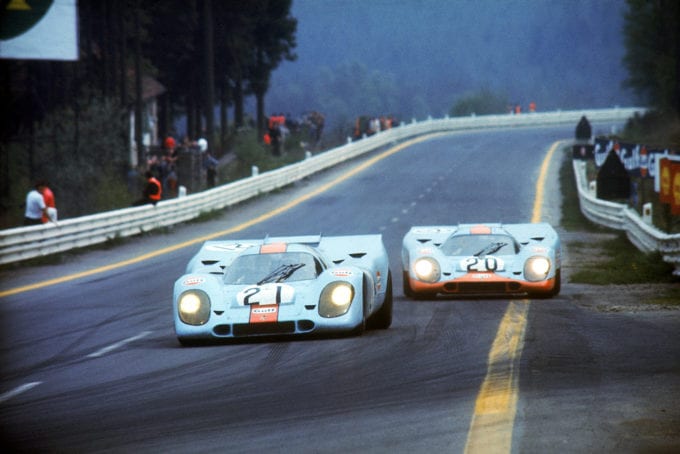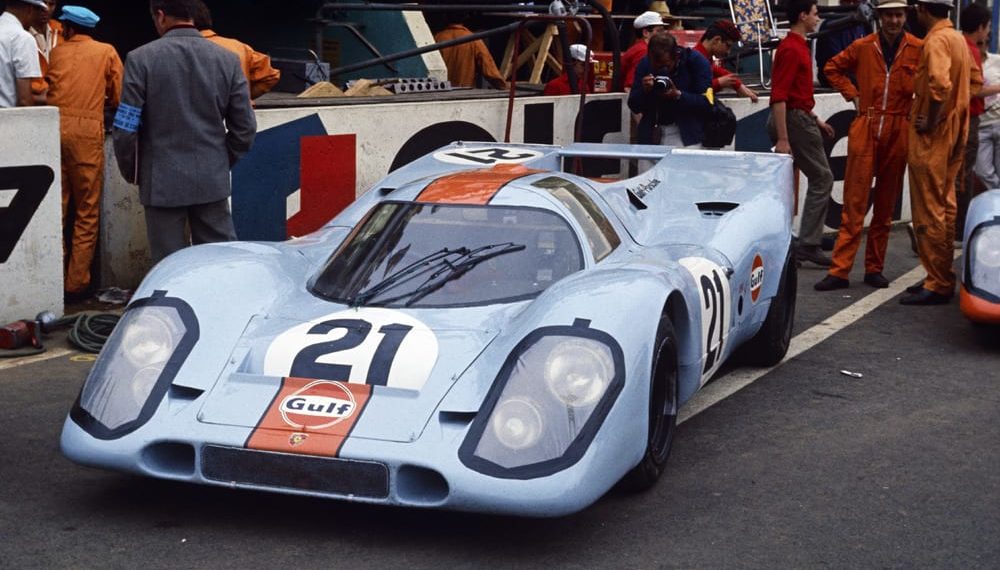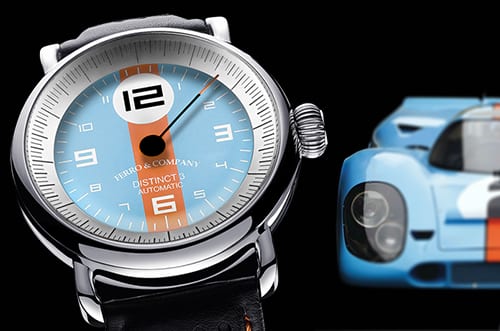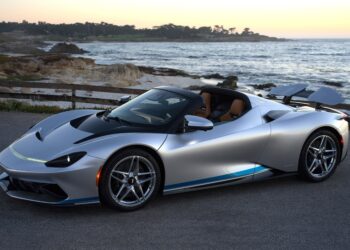It’s 1967, and Grady Davis, the vice president of Gulf Oil decides to enter his very own GT40 to race at both Daytona and Sebring under the number 1049. The car was finished with the Gulf Racing livery colors: blue with orange accents, and that car began a more than the 50-year long legacy of Gulf Oil Racing-sponsored cars, donning the famous blue and orange, and changing the world of motorsport forever.
Official Gulf Color Scheme: 3707 Zenith Blue and 3957 Tangerine
In 1967, Ford themselves had just left sports car racing, so Gulf then decided to take over the team of GT40s, doing them up in the now-eponymous 3707 Zenith Blue and 3957 Tangerine colors that we know the best Gulf liveries for today. Gulf sponsored cars have a diverse cast of Gulf livery cars, thus the iconic blue and orange have become associated with four wins at 24 hours of Le Mans, two of those wins being back-to-back between 1968 and 1969, and plenty of other racing accolades. The pedigree and success those cars achieved is the reason that the original GT40s are worth tens of millions of dollars today. Between Porsche, Aston Martin, McLaren, Audi, and of course the Ford GT, the Gulf Livery logos they’ve worn have been an unmistakable symbol of a car with a racing pedigree. A Porsche 911 GT3 RS or a Ford GT is already bound to turn heads on the street, but when they wear the colors that are synonymous with the golden age of motorsport, there’s no doubt in anyone’s mind that they’re looking at a machine that is capable of doing incredible things on the track.
Thus, the legend of the Gulf livery colors is far deeper than simply being an iconic throwback, or making for a nice car to look at. Any motorsport fan knows, thanks to half a century of history, that Gulf Oil commitment to racing has shaped, innovated, and defined motorsport as we know it today. A Gulf car is a celebration of how far racing has come over the past 50 years, and how the joy of speed and the spirit of competition will preserve motorsport for generations to come.
McLaren P1
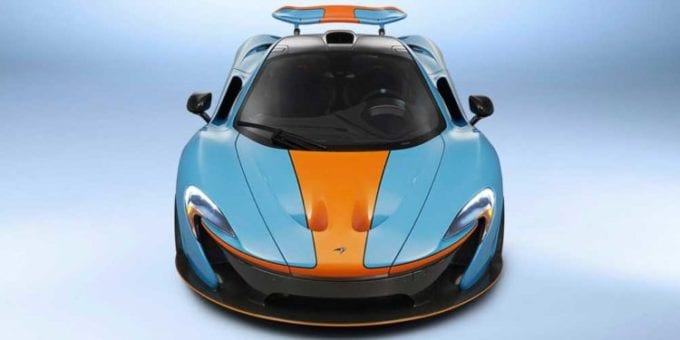
2020 Ford GT Heritage

McLaren 675LT and 1997 F1 GTR Longtail
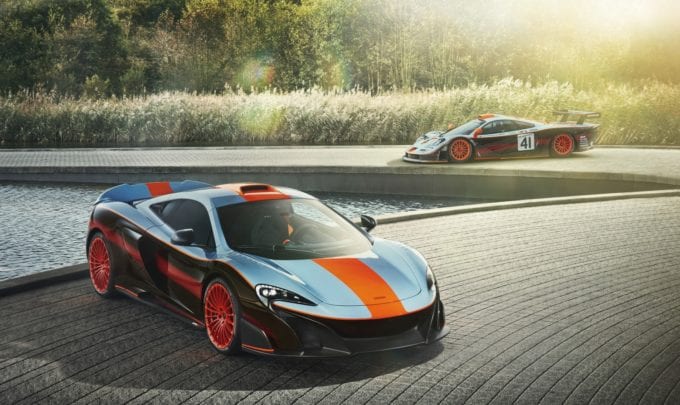
1968 Ford GT40
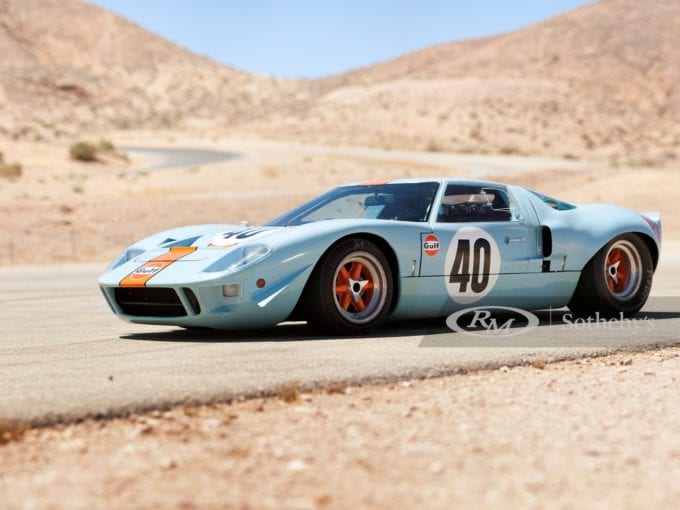
Porsche 918 Spyder Weissach
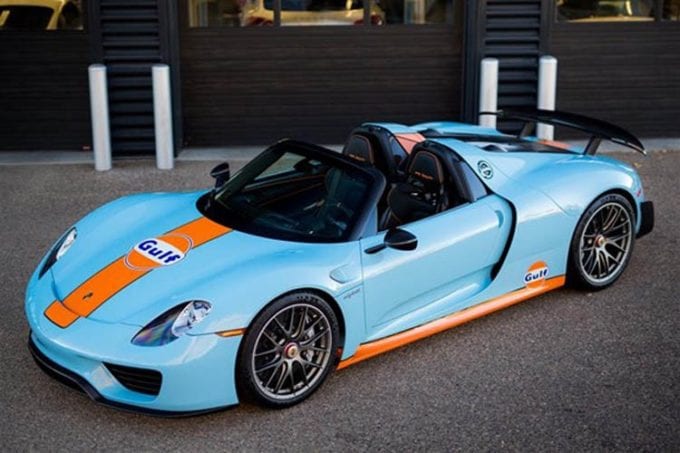
Lamborghini Aventador Liberty Walk
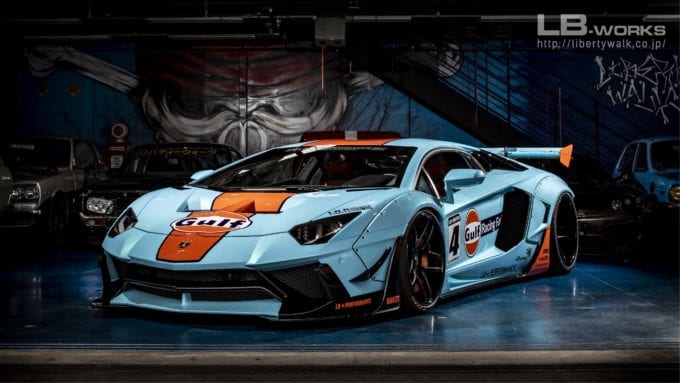
2019 Ford Mustang GT

2005 Ford GT Merkury 4
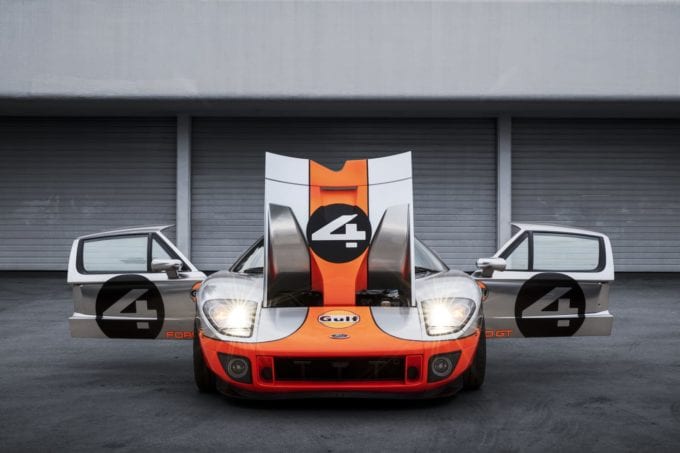
1971 Porsche 917
